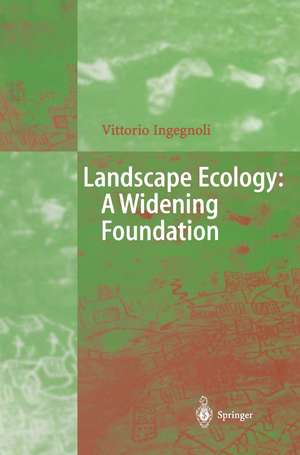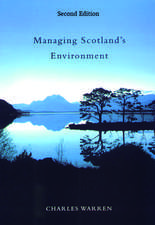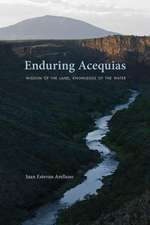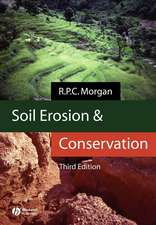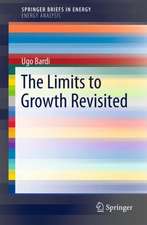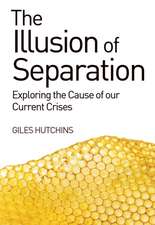Landscape Ecology: A Widening Foundation
Prefață de R.F.F. Forman Autor Vittorio Ingegnolien Limba Engleză Paperback – 16 sep 2011
| Toate formatele și edițiile | Preț | Express |
|---|---|---|
| Paperback (1) | 948.61 lei 6-8 săpt. | |
| Springer Berlin, Heidelberg – 16 sep 2011 | 948.61 lei 6-8 săpt. | |
| Hardback (1) | 959.04 lei 6-8 săpt. | |
| Springer Berlin, Heidelberg – 9 iul 2002 | 959.04 lei 6-8 săpt. |
Preț: 948.61 lei
Preț vechi: 1156.84 lei
-18% Nou
Puncte Express: 1423
Preț estimativ în valută:
181.54€ • 197.12$ • 152.49£
181.54€ • 197.12$ • 152.49£
Carte tipărită la comandă
Livrare economică 22 aprilie-06 mai
Preluare comenzi: 021 569.72.76
Specificații
ISBN-13: 9783642076633
ISBN-10: 3642076637
Pagini: 384
Ilustrații: XXIII, 357 p.
Dimensiuni: 155 x 235 x 20 mm
Greutate: 0.54 kg
Ediția:Softcover reprint of the original 1st ed. 2002
Editura: Springer Berlin, Heidelberg
Colecția Springer
Locul publicării:Berlin, Heidelberg, Germany
ISBN-10: 3642076637
Pagini: 384
Ilustrații: XXIII, 357 p.
Dimensiuni: 155 x 235 x 20 mm
Greutate: 0.54 kg
Ediția:Softcover reprint of the original 1st ed. 2002
Editura: Springer Berlin, Heidelberg
Colecția Springer
Locul publicării:Berlin, Heidelberg, Germany
Public țintă
ResearchDescriere
Exactly 25 years ago on a warm autumn afternoon a young ecologist walked slowly through a tiny oak wood, and perched on a log to reflect. He had measured and seemingly knew "all" the species present - trees, mosses, mushrooms, birds and more. The research, based on this and other woods in the landscape, was the first rigorous test to see if island biogeographic theory was of use in heterogeneous land. Unexpectedly, an interior-to-edge model was found to be more useful. But on this beautiful sunny day he gazed out through the trees at the surrounding bean and maize fields. Suddenly a terrible thought hit him. The land surrounding the other woods differed slightly from this scene. Here there were two bean fields plus a maize field, meadow, hedgerow and farm road, but the other comparably sized woods studied had different mixes of these land uses. Wouldn't the surroundings seriously affect the species in the woods? Had he done "bad science" (an awful feeling for a scientist)? Immediately he went to all his ecology books, searching for discussions of patchiness, mosaic pattern, interactions between ecosystems, and the like. Nothing. Surprise was a new ingredient to ponder. Then for 3 months every spare moment found him in the university library digging deeper, collecting tidbits and clues. A new feeling took over, challenge and excitement. The spatial arrangement of ecosystems and land uses is important ecologically! A giant but approachable scholarly frontier.
Cuprins
1 The Landscape as a Specific Living Entity.- 2 Some Concepts on a General Living Systems Theory.- 3 Landscape Structure.- 4 Landscape Dynamic.- 5 Landscape Transformation and Pathology.- 6 Theoretical Influence of Landscape Ecology.- 7 Landscape Analysis.- 8 Landscape Components Evaluation.- 9 Landscape Criteria of Evaluation and Diagnosis.- 10 Landscape Ecology and Sustainability.- 11 Landscape Ecology and Conservation Biology.- 12 Environmental Design and Territorial Planning.- 13 Examples of Application.- References.
Recenzii
From the reviews:
"In this excellent synthesis of the diverse European and North American views on landscape ecology, Ingegnoli (Univ. of Milan), a leading Italian scientist in the rapidly emerging field of landscape methodology and assessment, has brought together an amazing amount of information on complex landscape ecology theories, concepts, and indexes. … Well written; numerous illustrations; excellent glossary. Summing Up: Highly recommended." (M. J. Zwolinski, Choice, March, 2003)
"The author describes the book as providing, ‘a wide range of theories, of simple useful equations and of tested methods for the analysis and diagnosis of the ecological state of a landscape, including several case studies’. This is indeed the case; the text is interesting, up-to-date, thought-provoking and fairly comprehensive. … The book excels in describing the application of landscape ecological methods in areas such as sustainability, conservation biology and planning and the case studies would be useful to any teacher of the subject." (Gary Campbell, Progress in Physical Geography, Vol. 27 (3), 2003)
"It provides a wide range of theories, of simple useful equations and of tested methods for the analysis and diagnosis of the ecological state of a landscape, including several case studies. Further, the diverse European and North American approaches and perspectives have coalesced for the first time. … This book is written for a broad audience: students of biology and natural sciences, agronomy and forestry, environmental engineering, territorial planning and landscape architecture, as well as for professionals and managers of the environment." (Ethology, Ecology & Evolution, Vol. 14 (3), 2002)
"In this excellent synthesis of the diverse European and North American views on landscape ecology, Ingegnoli (Univ. of Milan), a leading Italian scientist in the rapidly emerging field of landscape methodology and assessment, has brought together an amazing amount of information on complex landscape ecology theories, concepts, and indexes. … Well written; numerous illustrations; excellent glossary. Summing Up: Highly recommended." (M. J. Zwolinski, Choice, March, 2003)
"The author describes the book as providing, ‘a wide range of theories, of simple useful equations and of tested methods for the analysis and diagnosis of the ecological state of a landscape, including several case studies’. This is indeed the case; the text is interesting, up-to-date, thought-provoking and fairly comprehensive. … The book excels in describing the application of landscape ecological methods in areas such as sustainability, conservation biology and planning and the case studies would be useful to any teacher of the subject." (Gary Campbell, Progress in Physical Geography, Vol. 27 (3), 2003)
"It provides a wide range of theories, of simple useful equations and of tested methods for the analysis and diagnosis of the ecological state of a landscape, including several case studies. Further, the diverse European and North American approaches and perspectives have coalesced for the first time. … This book is written for a broad audience: students of biology and natural sciences, agronomy and forestry, environmental engineering, territorial planning and landscape architecture, as well as for professionals and managers of the environment." (Ethology, Ecology & Evolution, Vol. 14 (3), 2002)
Textul de pe ultima copertă
A general agreement of what is meant by the subject landscape ecology is still lacking. Therefore, it is necessary to reach a manifold but unique definition of landscape, to recognise what is important about landscapes and to arrive at a disciplinary model capable of utilising and integrating the existing different points of view on landscape ecology. If that is done, then all the applications related to the land can be set in a correct framework using a consequent effective methodology.
This is the aim of this book. It provides a wide range of theories, of simple useful equations and of tested methods for the analysis and diagnosis of the ecological state of a landscape, including several case studies. Further, the diverse European and North American approaches and perspectives have coalesced for the first time. And, it proposes a new approach to understand landscape pathology and degradation.
This book is written for a broad audience: students of biology and natural sciences, agronomy and forestry, environmental engineering, territorial planning and landscape architecture, as well as for professionals and managers of the environment. It is hoped that it will also aid in the training of new professionals such as environmental physicians too, because the challenge of sustainability is a continuous one.
This is the aim of this book. It provides a wide range of theories, of simple useful equations and of tested methods for the analysis and diagnosis of the ecological state of a landscape, including several case studies. Further, the diverse European and North American approaches and perspectives have coalesced for the first time. And, it proposes a new approach to understand landscape pathology and degradation.
This book is written for a broad audience: students of biology and natural sciences, agronomy and forestry, environmental engineering, territorial planning and landscape architecture, as well as for professionals and managers of the environment. It is hoped that it will also aid in the training of new professionals such as environmental physicians too, because the challenge of sustainability is a continuous one.
Caracteristici
A comprehensive overview of the priniples, models and methodology of landscape ecology, enriched by several interesting case-study applications
The author of this consistently written book, Vittorio Ingegnoli, is one of the leading figure in landscape ecology
With a Foreword by Richard T.T. Forman, Harvard University
The author of this consistently written book, Vittorio Ingegnoli, is one of the leading figure in landscape ecology
With a Foreword by Richard T.T. Forman, Harvard University
